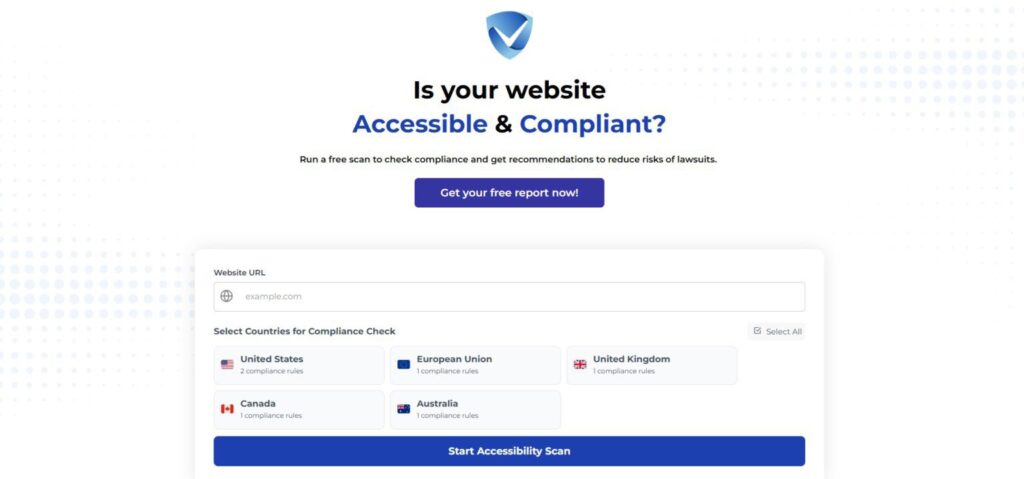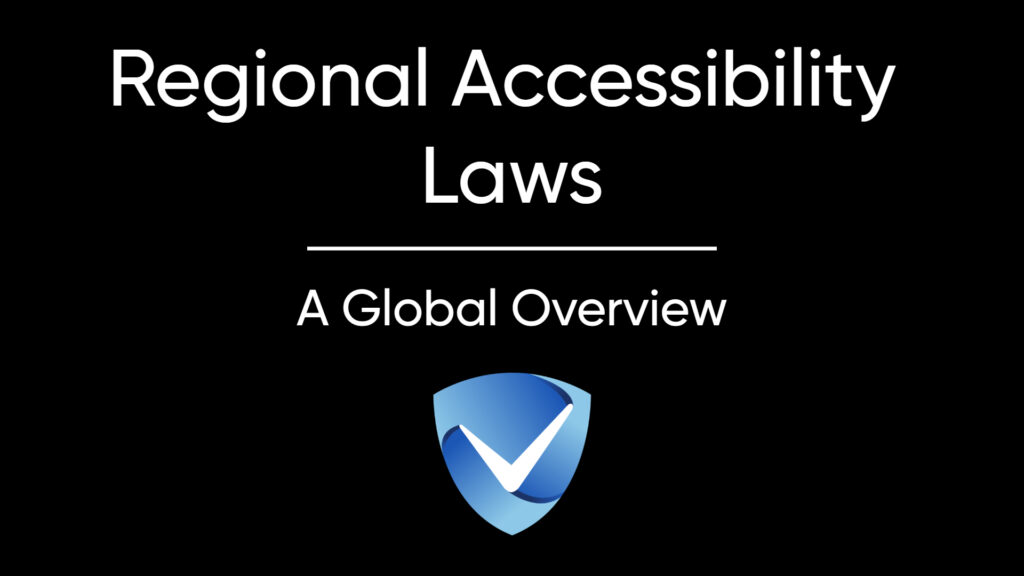Europe’s Regulatory Landscape
The European regulatory landscape plays a crucial role in establishing and maintaining standards that cater to the diverse needs of its citizens, including individuals with disabilities. This landscape is characterized by a myriad of policies and directives aimed at harmonizing laws across member states, ensuring not only market efficiency but also the protection of fundamental rights. The European Union (EU) stands at the forefront, setting a notable precedent with its ability to implement regulations that benefit both businesses and the public.
One of the key components of this regulatory framework is the European Accessibility Act (EAA), which seeks to remove barriers that hinder access for people with disabilities. This act embodies the EU’s commitment to inclusivity, mandating that various sectors—ranging from transportation to digital services—adopt measures that promote accessibility. By establishing mandatory accessibility requirements, the EAA aims to facilitate equality of opportunity, thereby aligning commercial interests with the rights of individuals with disabilities.
The EU’s approach to regulation encourages a balanced dialogue between market demands and social responsibility. In doing so, it fosters an environment where businesses can thrive while adhering to standards that uphold human dignity. This is particularly pertinent as globalization intensifies and markets evolve; the need for uniform regulations becomes even more pressing. Moreover, harmonized standards serve not only to simplify compliance for companies operating in multiple jurisdictions but also enhance the overall market by promoting innovation and competition.
As Europe continues to advance towards a more inclusive society, the effective implementation of the EAA and similar frameworks remains a priority. These regulatory structures not only pave the way for accessibility improvements but also serve as templates for future initiatives that advocate for the rights of marginalized groups, thereby demonstrating the EU’s leadership in creating a fair and equitable market environment.

The European Accessibility Act | Effective June 2025
The European Accessibility Act (EAA) is a pivotal legislative framework aimed at fostering equal access for individuals with disabilities throughout Europe. Effective from June 2025, the EAA mandates that specific sectors such as e-commerce platforms, banking services, and transportation providers uphold new accessibility standards. This initiative is seen as a critical step towards ensuring that people with disabilities can fully participate in society and benefit from the same services as their able-bodied counterparts.
Under the EAA, e-commerce platforms are required to make their websites and mobile applications accessible, thereby allowing consumers with disabilities to browse products, make purchases, and manage personal accounts without facing barriers. Businesses must implement accessible design principles, which include alternatives for visual or auditory content and accessible navigation features. These measures are expected to enhance user experiences and attract a wider customer base, reflecting a broader societal shift toward inclusivity.
In the realm of banking services, institutions will be compelled to adapt their digital interfaces to be accessible. This encompasses online banking platforms, mobile apps, and ATM services, ensuring that users with varying disabilities can engage safely and effectively. The ramifications for financial institutions are significant, as they must invest in technology and training to comply with these new regulations, ultimately reinforcing their commitment to equality.
Transportation providers, including public transit systems and ride-sharing services, will also face new requirements under the EAA. These regulations advocate for accessible booking systems and vehicle adaptations, promoting greater mobility for individuals with disabilities. As organizations align their services with the EAA, they not only comply with legal obligations but also enhance their reputations as inclusive entities.
This overarching legislation has far-reaching implications for businesses across Europe, fostering an environment where accessibility is prioritized and integrated into service delivery methods. Such transformative changes are expected to spur broader accessibility initiatives, reinforcing the EU’s commitment to the rights of people with disabilities.
EN 301 549 Standards and WCAG 2.1 AA Integration
The EN 301 549 standards are integral to ensuring that digital products and services are accessible to individuals with disabilities. As a European standard, EN 301 549 complements the Web Content Accessibility Guidelines (WCAG) 2.1 AA, which were developed by the World Wide Web Consortium (W3C). Both frameworks are essential in setting benchmarks for accessibility and ensuring compliance across various digital platforms. The integration of EN 301 549 with WCAG 2.1 AA facilitates a consistent approach towards creating a more inclusive digital environment.
EN 301 549 is specifically aimed at public sector websites and applications, mandating that they adhere to strict accessibility norms. This standard covers various areas, including hardware, software, and content accessibility, ensuring that all aspects of digital interfaces accommodate users with diverse abilities. By aligning with WCAG 2.1 AA, EN 301 549 ensures that avenues for accessibility are comprehensive and standardized, focusing on perception, operation, understanding, and robust compliance.
An important aspect of these standards is the requirement for multilingual accessibility statements. Such statements are crucial for informing users of their rights regarding accessibility and clarifying how organizations meet EN 301 549 and WCAG 2.1 AA criteria. By providing this information in multiple languages, organizations promote inclusivity and ensure that all potential users can understand their accessibility options, thereby minimizing barriers to information and services.
These standards play a vital role in digital inclusivity, as they not only define expectations but also encourage companies to adopt these guidelines proactively. Through the integration of EN 301 549 and WCAG 2.1 AA, Europe reinforces its commitment to creating a digital landscape where accessibility is a fundamental aspect, enabling equitable access for all users irrespective of their abilities.

National Implementations | Case Studies from France, Germany, and Spain
Europe’s commitment to the European Accessibility Act (EAA) has prompted individual countries to adopt varying approaches to ensure compliance while addressing their specific market needs and promoting disability rights. This section delves into how France, Germany, and Spain have interpreted and implemented the EAA within their regulatory frameworks.
In France, the implementation of the EAA has been marked by an emphasis on regular oversight through quarterly audits of accessibility standards. This approach reflects a proactive stance towards identifying and rectifying accessibility barriers within public services and digital environments. French authorities have established rigorous guidelines to evaluate organizations, ensuring that they utilize best practices in accessibility. This auditing process not only fosters compliance but also promotes a culture of continuous improvement, as entities are encouraged to engage in self-assessment and adapt their services dynamically to meet evolving user needs.
Germany, on the other hand, focuses on the technical aspects of compliance, particularly the necessity for machine-readable conformance reports. These reports are crucial elements in demonstrating adherence to accessibility standards, allowing both regulatory bodies and consumers to easily assess a service’s compliance status. Germany’s emphasis on transparency and verifiable data ensures that accessibility is not merely an obligation but a measurable goal that organizations must work towards. This systematic approach allows for effective monitoring and accountability, empowering users with the knowledge they need to make informed decisions about the services they engage with.
Meanwhile, Spain’s implementation strategy revolves around collaboration between public and private sectors. The Spanish government has facilitated partnerships among various stakeholders, including businesses, non-profit organizations, and disabled persons’ groups. This collaborative effort aims to foster a more inclusive dialogue surrounding accessibility, enabling comprehensive feedback mechanisms that motivate improvements across multiple sectors. By pooling resources and insights, Spain is working to create a more accessible environment that prioritizes the needs of all citizens.
North America’s Accessibility Compliance Frameworks
North America presents a complex regulatory landscape concerning accessibility, particularly through the Americans with Disabilities Act (ADA) Title III in the United States and a dual framework in Canada consisting of the Accessibility for Ontarians with Disabilities Act (AODA) and the Accessible Canada Act (ACA). The ADA Title III requires public accommodations to be accessible to individuals with disabilities, mandating that private businesses and non-profit organizations make their facilities and services available without discrimination. Compliance in the United States has seen an increase in accessibility lawsuits, with a reported statistic that the number of accessibility-related lawsuits surged to over 3,000 in 2022 alone, a significant rise from previous years, highlighting the growing concern and emphasis placed on accessibility issues.
In Canada, the accessibility compliance framework operates on a dual level: the AODA at the provincial level and the ACA at the federal level. The AODA governs organizations in Ontario, enforcing requirements for accessibility standards in both public and private sectors. Meanwhile, the ACA aims to create a barrier-free Canada by prioritizing broad regulations on accessibility that apply across different provinces and territories. This integration allows for a more comprehensive approach to accessibility, addressing diverse regional needs while maintaining a unified national standard.
Looking forward, long-term compliance strategies in Canada will likely involve an ongoing assessment of the effectiveness of these frameworks, supported by continuous stakeholder engagement and updated regulations to adapt to the evolving landscape of disability rights. As both nations navigate these compliance frameworks, collaboration between stakeholders remains essential to promote awareness, education, and adherence to these important accessibility standards. Ultimately, the goal of these compliance frameworks is to enhance accessibility and inclusion for all individuals, fostering environments that prioritize equal opportunities and rights.
Asia-Pacific | Diverse Approaches to Accessibility Standards
The Asia-Pacific region exhibits a rich tapestry of approaches to accessibility standards, reflecting the unique cultural, social, and economic contexts of each country. One notable example is Australia’s Disability Discrimination Act (DDA), which seeks to promote equal rights and opportunities for individuals with disabilities. Enacted in 1992, this legislation prohibits discrimination and mandates that public spaces be made accessible, thereby fostering inclusivity. The DDA serves not only as a legal framework but also as a catalyst for advocacy, inspiring various organizations and stakeholders to prioritize accessibility in all aspects of public life.
In Japan, the JIS X 8341-3 standard stands out as a comprehensive guideline for web accessibility. This standard emphasizes the necessity of accommodating users with disabilities in the digital sphere, aligning with Japan’s broader commitment to accessibility. Legal cases in Japan have underscored the importance of such standards, with citizens successfully challenging non-compliant organizations. This indicates a shift towards greater accountability and a stronger push for inclusivity across digital platforms.
Countries like South Korea and India are also making strides in establishing their own accessibility frameworks. South Korea has introduced various guidelines aimed at enhancing accessibility for all citizens, including the elderly, particularly in public transport and infrastructure. Meanwhile, India is working to integrate accessibility standards into its broader legal frameworks, driven by an increasing recognition of the rights of persons with disabilities. The recent establishment of the Rights of Persons with Disabilities Act has sparked renewed interest in enhancing accessibility across multiple sectors, including education and employment.
Ultimately, the Asia-Pacific region’s diverse approaches to accessibility standards signify a collective commitment to fostering environments where individuals, regardless of their abilities, can thrive. Each country’s unique solutions contribute to a larger dialogue on accessibility, emphasizing the need for ongoing collaboration and shared learnings.
Best Practices for Compliance | Staying Ahead of the Curve
Organizations seeking to comply with current and upcoming standards must adopt best practices that not only ensure adherence to regulations but also foster a proactive commitment to inclusivity. A fundamental step in this process is the adoption of Web Content Accessibility Guidelines (WCAG) 2.2. These guidelines offer a framework to make web content more accessible to individuals with disabilities. By implementing WCAG 2.2, organizations can enhance user experience while also meeting legal requirements, thereby reinforcing their dedication to accessibility.
In addition to integrating WCAG 2.2, it is crucial for organizations to monitor geopolitical deadlines associated with regulatory changes. The regulatory landscape is ever-evolving, and keeping abreast of these developments allows organizations to anticipate changes and adjust their practices accordingly. Establishing a dedicated team or appointing a compliance officer can ensure that deadlines do not go unnoticed. This proactive approach enables organizations to align their strategies with the shifting regulatory environment promptly.
Moreover, effective governance structures play a pivotal role in promoting accountability and ensuring compliance with accessibility standards. Organizations should establish clear lines of responsibility for compliance across all levels. This includes creating committees that oversee accessibility initiatives, setting benchmarks, and regularly auditing compliance efforts. By fostering a culture of accountability, organizations can ensure that all employees understand their roles in maintaining compliance and enhancing accessibility.
Finally, regular training and awareness programs can further strengthen an organization’s compliance efforts. Continuous education about the importance of accessibility and the specifics of regulatory requirements empowers staff to contribute constructively to compliance initiatives. By embedding best practices into the organizational culture, companies can not only stay ahead of the curve but also advocate for enhanced disability rights in the broader market context.

Future Trends in Accessibility | Geopolitical Mapping and User Testing
The evolving landscape of accessibility necessitates organizations to be proactive in their approach to meet diverse market needs. To effectively anticipate future trends in accessibility, it is crucial for organizations to engage in geopolitical mapping. This strategic approach involves monitoring regional deadlines and regulations that influence accessibility standards across different territories. By understanding these geopolitical dynamics, organizations can better tailor their products and services to meet compliance requirements, ultimately enhancing accessibility for users with disabilities.
Another vital component in predicting trends is the active involvement of diverse disability groups throughout the user testing phase. Engaging these groups allows organizations to gather insights that foster a deeper understanding of specific accessibility challenges faced by individuals. By including representatives from varied backgrounds, organizations can gain a more nuanced perspective on usability and functionality. This collaborative effort not only improves the products and services offered but also ensures that they are genuinely inclusive and cater to all users’ needs.
Furthermore, employing co-design strategies can significantly aid in fostering inclusive practices. Co-design emphasizes collaboration between designers, developers, and users, particularly those with disabilities during the design and testing phases. By actively involving users in the creation process, organizations promote a culture of inclusivity that reflects the real-world experiences of those affected by accessibility barriers. This collaborative approach not only enhances innovation but also reinforces the commitment to adhere to best practices in accessibility standards.
In conclusion, the combination of geopolitical mapping and user-testing engagement is essential for organizations striving to meet future trends in accessibility. By adopting these strategies and embracing co-design practices, organizations can effectively align their initiatives with market needs while upholding disability rights.
Try Our Free Website Accessibility Scanner

Embracing accessibility in business practices transcends simple compliance with regulatory frameworks; it evolves into a strategic advantage. Organizations that proactively integrate accessibility into their operations stand to benefit significantly. This shifts the focus from a reactive stance to a comprehensive approach that recognizes the value of inclusion for all stakeholders, including those with disabilities.
A key benefit of this approach is the potential for expedited market entry. Companies that adopt accessible designs and services can effectively tap into the expansive $1.9 trillion disability market. This customer segment often feels underserved, providing a unique opportunity for businesses to innovate and cater to diverse needs. By seizing this opportunity, companies not only broaden their customer base but also enhance brand loyalty among consumers who prioritize inclusivity.
Moreover, fostering an accessible environment aids in risk reduction. Companies committed to ongoing compliance gap analyses and regular staff training on disability rights and accessibility standards can minimize legal risks associated with neglecting these important considerations. A proactive compliance strategy diminishes the likelihood of facing litigation, thereby safeguarding the organization’s reputation and financial interests.
It is essential for organizations to view accessibility as an ongoing journey rather than a finite goal. Regular training initiatives and compliance reviews are crucial to keeping current with evolving regulations and best practices. By instilling a culture of inclusivity within the organization, businesses can ensure that they not only comply with applicable laws but also build an adaptive framework that embraces accessibility as a core value.
In conclusion, the integration of accessibility into core business strategies is not merely a legal obligation; it is a pathway to improved market performance and a competitive edge. Organizations that prioritize this commitment will find themselves well-positioned to meet the needs of all consumers, fostering a more inclusive society overall.



